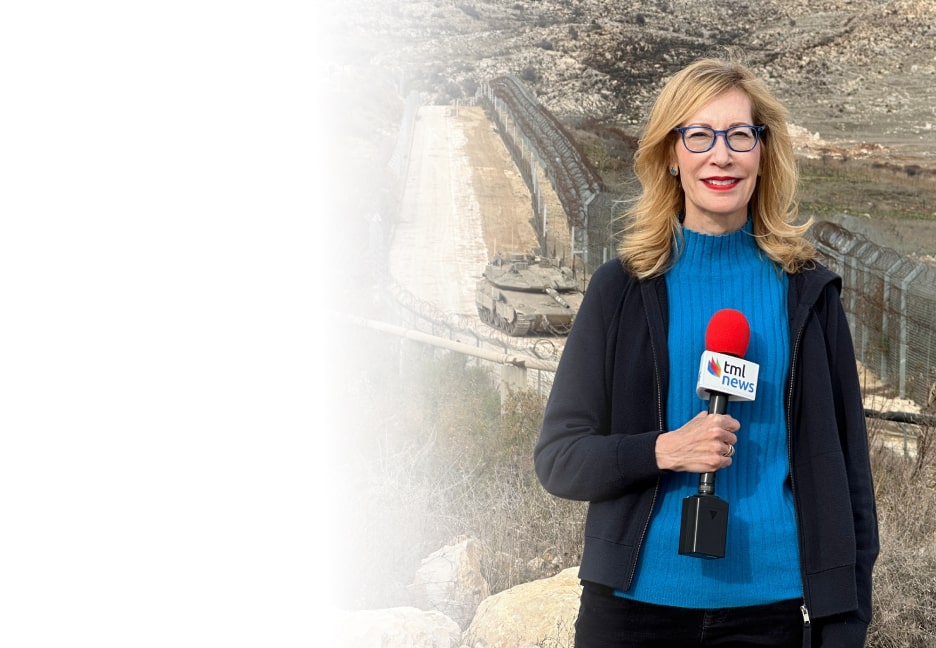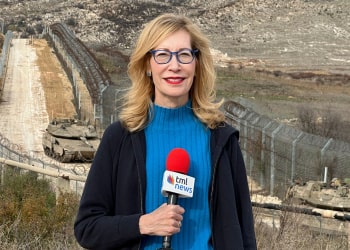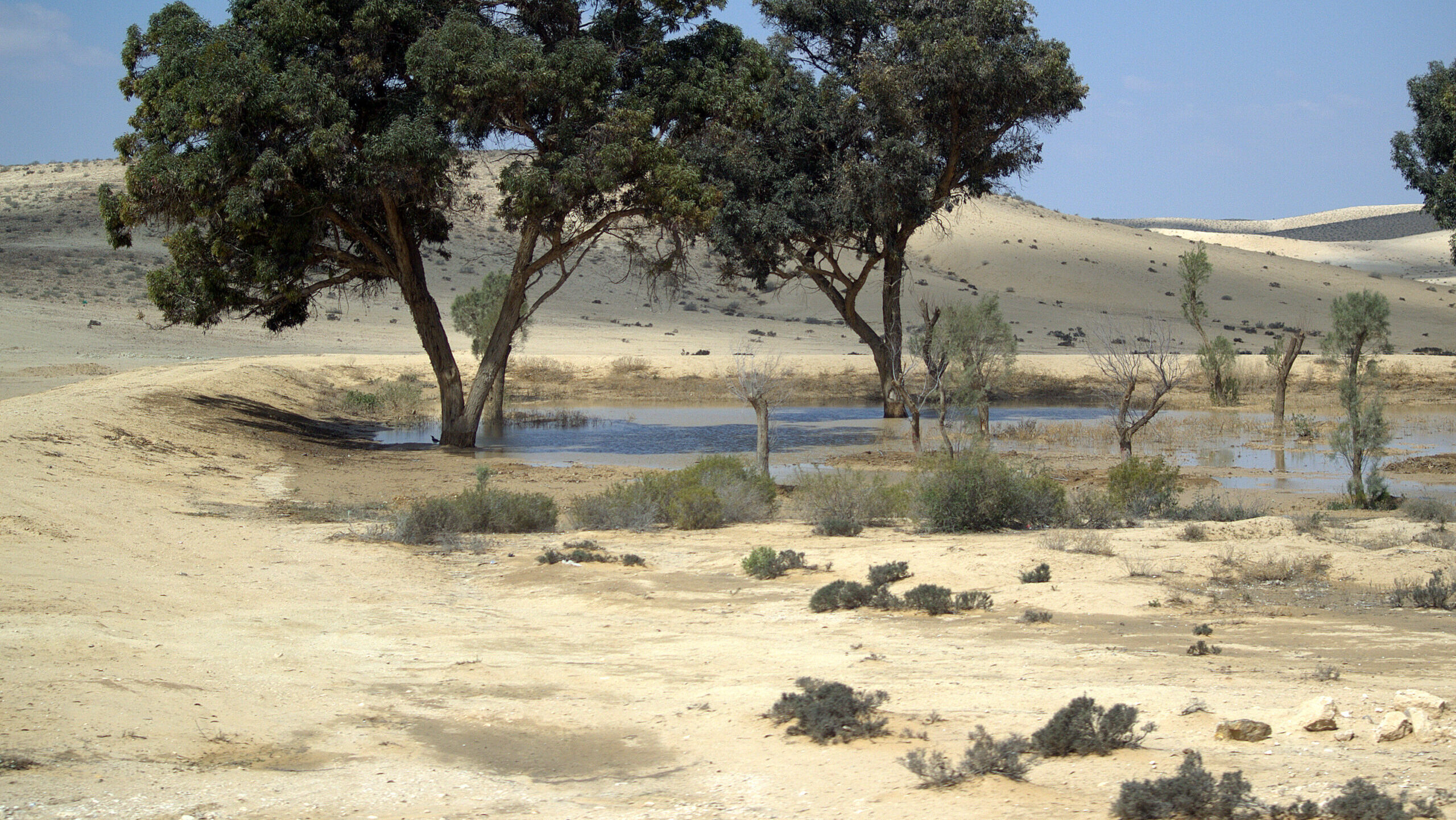Scientists Use AI To Combat Water Scarcity, Desertification
As water scarcity and desertification worsen, AI is emerging as a vital tool for innovative water management and drought resilience worldwide
Last week marked World Day to Combat Desertification and Drought, a UN holiday promoting public awareness of efforts to stop land degradation. As desertification and water scarcity are intensifying as global concerns, especially in the Middle East, experts say new technologies including artificial intelligence have become increasingly viable tools to combat these crises.
“Water is not created nor destroyed,” said Scott Hansen, a senior lecturer at the Zuckerberg Institute for Water Research at Ben-Gurion University. “To deal with water scarcity, you can produce more drinkable water as well as reduce consumption.”
In the Middle East, the most water-stressed region in the world, Israel is a leader in the field, with more than 80% of Israel’s potable water produced through desalination.
Israel began developing desalination technology back in the 1960s and has also been a leader in fields such as irrigation technology and solar water heating. In 2011, the country achieved a new accomplishment in the field with the establishment of WINT Water Intelligence, a water management company that uses AI to stop water waste.
Israel was always at the forefront of these things. And we’re just continuing that thread with water efficiency and helping the world solve water scarcity, especially in this region.
“Israel was always at the forefront of these things. And we’re just continuing that thread with water efficiency and helping the world solve water scarcity, especially in this region,” Yaron Dycian, chief product and strategy officer at WINT, told The Media Line.
Dycian said that Israel is using its water technology for “the good of the world.” “This is a water-stressed area. …We are working with other parts of the region for something that’s for the good of everyone,” he said.
WINT specifically focuses on reducing water waste after the water has passed the utility meter into a consumer’s home or business. “That’s where the vast majority of it goes, and that’s where things start to break,” Dycian said. “About a quarter of the water that gets into these buildings goes to waste.”
He explained that something as simple as a leaking toilet can waste dozens of gallons of water per hour, generating the same carbon emissions annually as a typical passenger car.
This holiday season, give to:
Truth and understanding
The Media Line's intrepid correspondents are in Israel, Gaza, Lebanon, Syria and Pakistan providing first-person reporting.
They all said they cover it.
We see it.
We report with just one agenda: the truth.


WINT installs water flow meters and valves throughout a building’s plumbing and connects them to a control unit that monitors the water flow. This AI-integrated system identifies leakage patterns, sends alerts, and, when necessary, shuts off the water to prevent damage.
“We’ve identified cooling power issues that wastewater at a rate of hundreds of thousands of dollars a year,” Dycian said. The Empire State Building and Israel’s Azrieli mall chain are among WINT’s customers.
Dycian believes this technology will become standard in new buildings.
“Installing a solution like ours into a building is not complicated. It’s a few valves and meters,” he said. “And with that, you have a waterproof, water-safe, water-efficient building.”
Kando, another Israeli company founded in 2011, uses technology to monitor wastewater. Using advanced hardware, artificial intelligence, and machine learning, the company collects and analyzes wastewater data.
About 85% of Israel’s wastewater is used for irrigation.
“Wastewater quality determines almost everything that happens in the treatment process,” Anne-Li Steutel, marketing manager at Kando, told The Media Line. “If you have a very low quality of wastewater that flows into the treatment plants, it will harm them.”
When wastewater is discharged with a higher risk of pollution, the system will take an automated sample and trace its source, Steutel said.
In one case, an Israeli city started receiving complaints from farmers that their crops were dying. Wastewater tests showed high salinity, a condition not typically treated at the plant.
Conventional wastewater monitoring is done periodically. Compared to Kando’s constant testing, period sampling is less reliable.
“You don’t have six months to figure out where this is coming from because if you’re using it for water reuse and it’s killing plants, it’s quite urgent,” she said, emphasizing the need to find the source quickly.
You don’t have six months to figure out where this is coming from because if you’re using it for water reuse and it’s killing plants, it’s quite urgent.
The use of AI in water management and utility systems is gaining popularity, but it also presents challenges. A recent article on generative AI in water utility operations published in Water Research found that, while effective, most AI tools “remain out of reach for many utilities.”
While private companies are developing AI for sustainable water management, the International Drought Resilience Alliance (IDRA) has created an AI tool to combat desertification more broadly.
Under the umbrella of the United Nations Convention to Combat Desertification (UNCCD), the IDRA unveiled the prototype of the first global AI-driven platform for proactive drought management in Riyadh last December. The observatory will use the best data available globally to answer questions in an accessible format.
The final version, expected to launch at the 2026 conference in Mongolia, is called the International Drought Resilience Observatory (IDRO). It aims to bridge the gap between complex data and policymakers, according to the IDRA.
Representing more than 70 countries and organizations, the IDRO reflects a global effort. Although its full development is not expected until 2026, the ongoing crisis of land degradation was discussed at this year’s World Day to Combat Desertification and Drought in Bogotá, Colombia, last week.
“With IDRO, authorities and land and water managers will be able to analyze and visualize key drought resilience indicators as the basis for better decisions,” said Edgar Gutiérrez-Espeleta, UNCCD senior adviser.
Addie J. Davis is a recent graduate of the University of North Texas and an intern in The Media Line’s Press and Policy Student Program.

